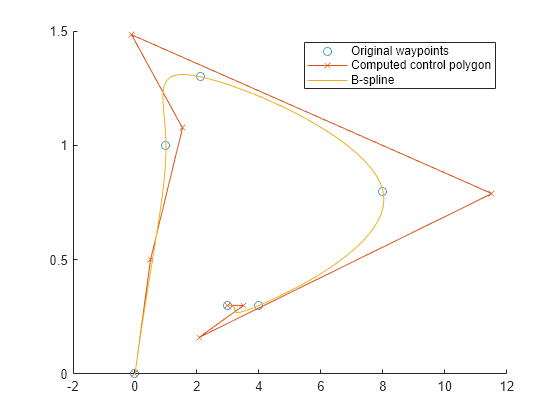bsplinepolytraj
Generate polynomial trajectories using B-splines
Description
[
generates a piecewise cubic B-spline trajectory that falls in the control polygon defined by
q,qd,qdd,pp] = bsplinepolytraj(controlPoints,tInterval,tSamples)controlPoints. The trajectory is uniformly sampled between the start
and end times given in tInterval. The function returns the positions,
velocities, and accelerations at the input time samples, tSamples. The
function also returns the piecewise polynomial pp form of the
polynomial trajectory with respect to time.
Examples
Input Arguments
Output Arguments
References
[1] Farin, Gerald E. Curves and Surfaces for Computer Aided Geometric Design: A Practical Guide. San Diego, CA: Academic Press, 1993.
Extended Capabilities
Version History
Introduced in R2019a
See Also
contopptraj | cubicpolytraj | quinticpolytraj | rottraj | transformtraj | trapveltraj


